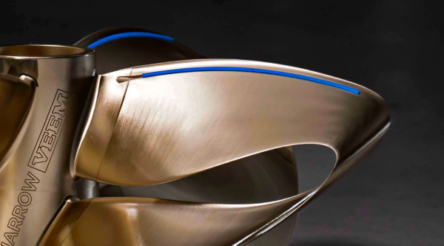Towards a better AUKUS – by Paul van de Loo

SME business has taken a rather dim view to the long timelines associated with industry opportunities that could arise from the AUKUS agreement between Australia, the UK and the US. Here Paul van de Loo takes a jaundiced view, and presents an alternative industrial scenario.
The AUKUS agreement has captured a lot of airtime lately. For those of you living under a rock, AUKUS is an up to $368 billion project to equip our Navy with submarines with a promise of 20,000 jobs (that’s $18.4 million per job – if they happen).
But nothing is to be designed here. Nothing is to be built here other than some hulls and assembly starting in the 2040s. But we get to store the nuclear waste. Lucky us!
Work on Collins upgrades will cease and the small but talented team at ASC will dissipate. The vestiges of local submarine design and manufacturing capability will be lost. Most of the $368B will go to design and facilities in the US and UK. It’s not sounding very appealing…….
Let’s first examine how we ended up with AUKUS. Then let’s look at the cultural change required to do better. Then I’ll present a proposal for what we should do instead of AUKUS.
I’ve been working in engineering design in Australia for over 40 years, many of these as Principal Engineer at Applidyne Australia which I founded 30 years ago. I’ve been involved in hundreds of engineering projects in industry, both defence and non-defence with a focus on new product development and manufacturing. I’ve worked closely with universities in many projects.
It would be fair to say that I’ve developed a bit of an understanding of engineering, manufacturing and academia in Australia and overseas. To understand our current situation and AUKUS, we need to reflect on our unique history in technology development and manufacturing.
We have a long and distinguished list of achievements that no other country can match. Unfortunately, they’re not really ones to be proud of. They include:
- Getting off to a great start in space technology and satellites in the 1950s with the help of the British. We launched rockets from Woomera and in 1967 we built and launched a satellite, WRESAT. Then we stopped. Now satellites and satellite services are critical to our way of life, but none are Australian
- We use planes to cover our huge distances. A lot. We did make planes once. But then we stopped. Now we don’t make planes other than the odd Jabiru.
- We have abundant natural resources. We have enormous iron ore mines. But we make very little steel. We import most of that from the people we shipped our ore to (mostly China). With other resources we’re no better whether it be rare earths, lithium or uranium. We can’t see the value in “value-add”
- We buy a lot of defence hardware. We’ve got a big country to defend. But we do not make a single plane, submarine, helicopter, tank, heavy weapon or missile. We make a few guns under license to an Austrian (yes, that’s Austrian not Australian) company and some armoured vehicles (e.g. Bushmaster). Both made here by a French company. We make ships, but none of the hardware that goes on them – propulsion, combat systems, guns, radars etc
- We developed a car industry. For a wide brown land that was a pretty good idea. We made Holdens and Fords and Chrysler Valiants. We never achieved local ownership, but we designed and built a lot of cars. Then we stopped. We’re still a voracious consumer of automotive products but now we import every single one of them
- We’ve adopted wind and solar energy; we have an abundance of both. But we don’t make any wind turbines. And almost all our solar panels are imported
- We’re the biggest and most remote island on the planet. But we import almost everything. It comes on ships. But we don’t make, own, or operate any of these ships. We import most of our oil and almost all our petrol and diesel. We hold only three weeks of supplies of petrol and diesel. So, if something went wrong with these supply lines we stop dead after three weeks.
- And we have a good education system. We develop technology here. But then we stop. We invented WiFi. But you can’t buy an Australian WiFi router. Our economy is ranked 91st in the world, behind Kazakhstan, for economic complexity (Google it).
We’re hugely indebted to our farmers and miners that allow us to fund all these imports. Can it last?
How we’ve ended up with such a list of failures is probably a topic for another article. Suffice to say that we’re going to need significant cultural change. And cultural change is the hardest of all.
Let‘s dream a little. Imagine that we can find enough people with the vision, talent and determination to do something much more ambitious. People with the passion to develop Australian sovereign capability. People with confidence in our own ability. People that are in it for the long haul and can bat away the doubters.
With a $368 billion budget, what would we do? Well, I’ll preface this with the disclaimer that I’m not a submarine expert. But I listen to those that are.
So, here’s the plan – go full-steam ahead with the current Collins Life of Type Extension (LOTE) programme to keep our existing boats in the water as long as possible, and build a few more Collins boats to the new LOTE design possibly with another low-risk upgrade or two that are not practical on the existing boats.
And now for the big one. The Big Hairy Audacious Goal. Design and build our own nuclear-powered boat. To do this we will:
- Recruit as many UK and US engineers and project managers with relevant experience into Australia. Australia is a nice place to live and work so this is possible
- Build a nuclear capability – to design, build and maintain our own reactors and propulsion systems. Hopefully we have enough of a core set of skills at Lucas Heights to give us a head start.
- Pay our universities to train more engineers with relevant knowledge, including Systems Engineering (one of our major weaknesses). This will necessitate a reversal in the decline of standards that we are seeing – an external exit exam (no pass no pay) will do the trick
- Develop a RFT to majority Australian owned companies to design and build the boats
- The successful company will build a prototype boat first, with the remainder of the contract subject to satisfactory performance in sea trials. Or, resources permitting, we could award tenders to two companies and the best prototype wins the build
- Team with the Americans and the Brits where we can – common componentry and subsystems in our designs is a good idea. Let’s call it AUKUS SC (Sovereign Capability)
- And above all, this will take extraordinary leadership and wisdom to execute – well beyond what Defence has exhibited in any previous acquisition program. We will need to find these leaders in industry, here or overseas.
And now we can go wild!
We can build more boats. We can make our own spares. We can refuel our own reactors. We can export some boats and earn some of the $368B back!
Our revitalised universities will spawn graduates that will grow our technology and manufacturing base in other areas. Maybe we could design and build EVs and wind turbines! We will have what most countries value dearly – Sovereign Capability.
Further reading:
BUILDING A SUBMARINE INDUSTRIAL BASE – BY MICHAEL SLATTERY
Paul van de Loo is an engineer with over 30 years experience in product design and R&D in automotive, military, medical, mining and consumer goods, as well as cleantech projects. He serves on the National Committee for Engineering Design, a committee of Engineers Australia, and the committee of the Electronics Industry Development Association (EIDA). Paul is Technical Director at engineering design house Applidyne, which he founded in 1993.
Picture: Picture: Australian Naval Infrastructure/The partially completed submarine construction yard at Osborne, Adelaide
@aumanufacturing Sections
Analysis and Commentary Awards Defence Manufacturing News Podcast Technology Videos










